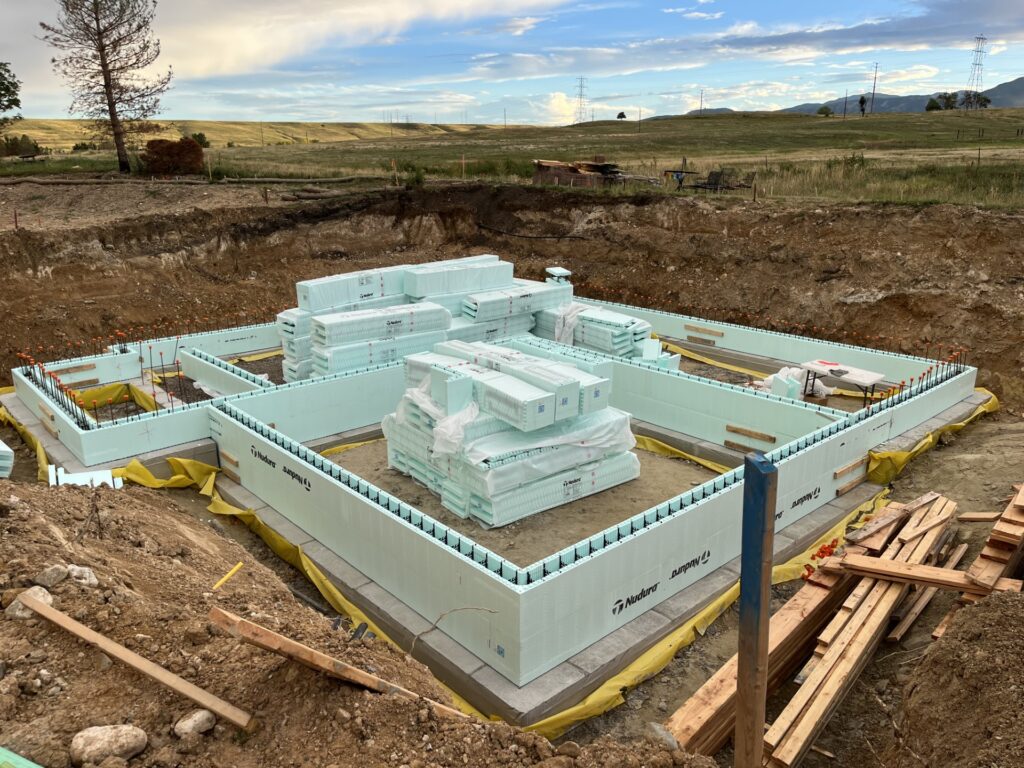Building a home is a big undertaking, and when it comes to choosing the right materials, concrete homes are becoming an increasingly popular option. With their durability, energy efficiency, and low maintenance needs, concrete homes offer a range of benefits that make them a great long-term investment. However, like any construction project, building a concrete home requires careful planning, time, and understanding of the process.
If you’re considering building a concrete home, you might be wondering what to expect throughout the journey. In this step-by-step guide, we’ll walk you through the stages of building a concrete home, from the initial planning stages to the final touches. Whether you’re looking to build your dream home or are just curious about the process, this guide will provide you with everything you need to know.
Step 1: Planning and Design
The first step in building a concrete home is planning and design. This is the stage where you will work with architects and builders to define the overall vision for your home. Whether you’re looking for a sleek, modern design or a more traditional feel, concrete homes offer the flexibility to bring your ideas to life.
During the planning phase, you’ll discuss the layout of your home, including the number of rooms, overall square footage, and specific features you’d like to include. You’ll also need to decide on the type of concrete construction you want. Many concrete homes are built using Insulated Concrete Forms (ICFs), which provide extra insulation, while others use poured concrete or concrete blocks.
Working closely with an experienced builder will help you choose the right materials and design elements that align with your goals. It’s essential to think about energy efficiency, durability, and long-term maintenance needs during this phase. Don’t be afraid to ask questions or request modifications until you’re confident that the design will meet your needs and expectations.
Step 2: Permits and Approvals
Before you can start construction, you’ll need to secure the necessary permits and approvals from your local government. The requirements will vary depending on your location, so it’s essential to check with your local building department to ensure you’re following all the rules and regulations.
The permit process may involve submitting detailed plans for your home, including the design, materials, and any structural components. You may also need to submit a site plan that outlines how the home will be positioned on your property, as well as any utility connections or other infrastructure considerations.
Once your permits are approved, you can move forward with construction. While the permitting process can take time, it’s crucial to follow the necessary steps to ensure your project is legally compliant and safe.
Step 3: Site Preparation and Foundation Work
After you’ve secured your permits, the next step is site preparation and foundation work. This stage involves clearing the land, leveling the site, and preparing the ground for the foundation of your concrete home.
If you’re building on an undeveloped lot, the site will need to be cleared of any trees, shrubs, or debris. This may also involve excavating the soil to create a level foundation. In some cases, soil testing may be required to ensure that the ground is stable enough to support the weight of your concrete home.
Once the site is cleared, it’s time to pour the foundation. The foundation is one of the most important components of any home, as it provides the structural support for the entire building. Concrete foundations can be poured as a slab, crawl space, or full basement, depending on the design and site conditions.
At this stage, you’ll also need to install plumbing and electrical lines that will be embedded in the foundation. Proper installation is essential, as any issues with plumbing or wiring can cause problems later in the construction process.
Step 4: Building the Concrete Structure
With the foundation in place, it’s time to start building the structure of your concrete home. This phase involves pouring the concrete walls, floors, and ceilings that will form the core of your home.
There are different methods for building a concrete structure, depending on the construction technique you’ve chosen. If you’re using Insulated Concrete Forms (ICFs), the process involves stacking foam blocks that are filled with concrete. These blocks create a strong, insulated structure that helps regulate indoor temperatures and reduce energy costs.
Alternatively, you may choose to use traditional poured concrete or concrete blocks. In either case, the concrete is poured or placed into molds to form the walls and floors. Once the concrete has cured, it provides a solid, durable structure that is resistant to weather, pests, and fire.
The concrete structure of your home will also include openings for windows and doors. These openings will need to be carefully measured and reinforced to ensure a proper fit for the frames.
Step 5: Installing Plumbing, Electrical, and HVAC Systems
With the main structure of the home in place, it’s time to install the plumbing, electrical, and HVAC (heating, ventilation, and air conditioning) systems. This is a critical stage, as these systems need to be properly integrated into the concrete structure to function efficiently.
Plumbing lines will be run through the walls and floors of the home, while electrical wiring will be installed to provide power to lights, outlets, and appliances. HVAC systems will also be installed at this stage, ensuring that your home will be comfortable and energy-efficient.
It’s important to work with skilled professionals to ensure that these systems are installed correctly and meet local codes and regulations. A well-designed plumbing, electrical, and HVAC system can improve the energy efficiency of your home and reduce long-term maintenance costs.
Step 6: Insulation and Exterior Finishing
Once the plumbing, electrical, and HVAC systems are in place, the next step is insulation and exterior finishing. Insulation is essential for energy efficiency, as it helps keep your home warm in the winter and cool in the summer.
If you’re using Insulated Concrete Forms (ICFs), the insulation is already built into the walls. However, if you’re using other forms of concrete construction, additional insulation may be added to the exterior or interior walls to improve energy efficiency.
At this stage, the exterior of the home is also finished. This may include applying a concrete finish, stucco, or siding, depending on the design and your preferences. The goal is to ensure that the home is both visually appealing and functional, with an exterior that can withstand the elements.
Step 7: Interior Work
With the exterior finished, it’s time to turn your attention to the interior of the home. This phase includes installing drywall, flooring, cabinetry, countertops, and other finishing touches.
The interior work is where you’ll see your home start to take shape. You’ll have the opportunity to choose the materials and finishes that best match your style and preferences. Whether you prefer hardwood floors, tile, or carpet, the interior finishes will bring your vision to life.
At this stage, it’s important to work with experienced contractors to ensure that all installations are done correctly. Whether it’s installing a beautiful kitchen or finishing the bathrooms, attention to detail during this phase will ensure that your home is both functional and stylish.
Step 8: Final Inspections and Touch-Ups
Once all the interior work is completed, the final inspections take place. This step involves ensuring that everything in the home is up to code and meets safety standards. Inspections may include checking the electrical systems, plumbing, HVAC, and structural integrity of the building.
If everything passes inspection, you’ll receive final approval from the local authorities. At this point, any minor touch-ups or adjustments will be made to ensure that everything is perfect before you move in.
Moving In
The final step in the process is moving in! Once all the work is completed and approved, you can officially make your concrete home your own. Whether it’s unpacking your belongings or putting up personal touches, the excitement of moving into a brand-new home is the culmination of months, if not years, of hard work.
Building a concrete home is a rewarding and efficient process, but it requires careful planning and attention to detail. From the initial design phase to the final move-in day, each step is important for ensuring that your home is built to last. Concrete homes offer incredible benefits, from energy efficiency to long-term durability, making them a great investment for any homeowner. By understanding the steps involved in the construction process, you can feel confident in your decision to build a concrete home and enjoy the many advantages it provides.
At Batten Builders, we specialize in creating custom concrete homes tailored to your needs. If you’re ready to start your journey toward building a concrete home, don’t hesitate to reach out. We’re here to guide you every step of the way.





